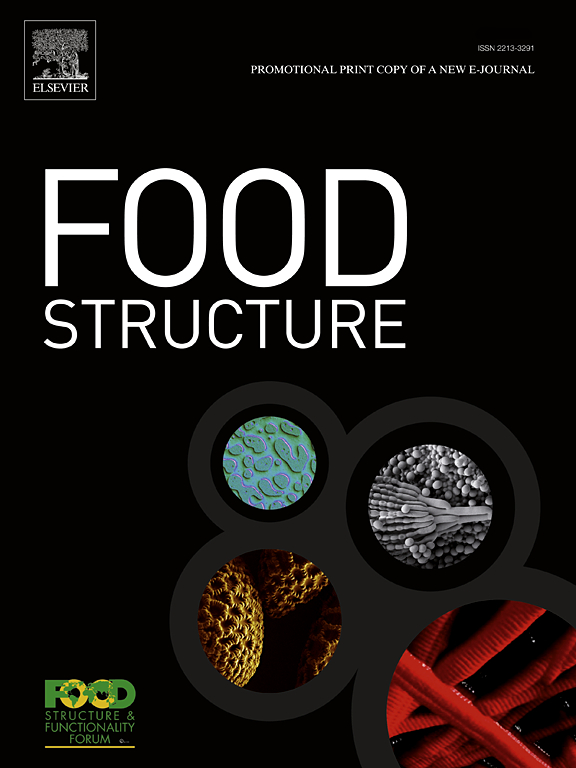Lubricative properties of semi-crystalline lipid systems
IF 5.9
3区 农林科学
Q1 FOOD SCIENCE & TECHNOLOGY
引用次数: 0
Abstract
Fat crystals provide the structural framework of lipid-continuous foods through the generation of a multiscale network. The role of the crystalline lipid phase during oral processing remains largely unexplored, despite being present in a multitude of products. This study explored this role in relation to the macroscopic behavior of full-lipid systems at temperatures relevant to oral processing. Hereto, blends of palm (PO) and canola (CO) oil were crystallized through slow, medium and fast cooling to induce microstructural variations. The crystalline phase at 35°C was characterized and linked to the sample’s rheological and tribological behavior. The solid fat content (SFC) at 35°C was proportionate with the PO level, presenting as particles of various sizes and distinct shapes as revealed through light and electron microscopy. The crystalline fraction impacted the rheological behavior, as demonstrated by the non-Newtonian behavior controlled by the sample’s SFC. The Stribeck curves obtained from tribological analysis showed significant differences between samples, predominantly in the boundary and mixed regime. A novel approach was proposed to interpret the tribological data, which was based on fitting of power functions and evaluation of lubrication regime areas, with the former allowing for the quantification of the progression of friction factors in the lubrication regimes. Tribological behavior was affected by various factors depending on the lubrication regime, including SFC, rheological parameters as well as particle size. Given that PO is the cornerstone of a vast array of food products, insights into a potential relationship with sensory attributes could aid in the product reformulation.

半结晶脂质体系的润滑性能
脂肪晶体通过多尺度网络的生成提供了含脂连续食物的结构框架。尽管存在于众多产品中,但晶体脂质相在口服加工过程中的作用仍未得到充分研究。本研究探讨了在与口腔加工相关的温度下全脂质系统的宏观行为的作用。在此,棕榈油(PO)和菜籽油(CO)的混合物通过慢速、中速和快速冷却结晶,以诱导微观结构的变化。35°C时的结晶相被表征,并与样品的流变学和摩擦学行为有关。固体脂肪含量(SFC)在35°C时与PO水平成正比,通过光镜和电子显微镜显示为各种大小和不同形状的颗粒。摩擦学分析得到的Stribeck曲线显示了不同样品间的显著差异,主要表现在边界区和混合区。提出了一种新的方法来解释摩擦学数据,该方法基于幂函数拟合和润滑区评估,前者允许量化润滑区摩擦因子的进展。摩擦学行为受到各种因素的影响,这取决于润滑方式,包括SFC、流变参数和颗粒尺寸。鉴于PO是大量食品的基石,洞察其与感官属性的潜在关系可能有助于产品的重新配方。
本文章由计算机程序翻译,如有差异,请以英文原文为准。
求助全文
约1分钟内获得全文
求助全文
来源期刊

Food Structure-Netherlands
Chemical Engineering-Bioengineering
CiteScore
7.20
自引率
0.00%
发文量
48
期刊介绍:
Food Structure is the premier international forum devoted to the publication of high-quality original research on food structure. The focus of this journal is on food structure in the context of its relationship with molecular composition, processing and macroscopic properties (e.g., shelf stability, sensory properties, etc.). Manuscripts that only report qualitative findings and micrographs and that lack sound hypothesis-driven, quantitative structure-function research are not accepted. Significance of the research findings for the food science community and/or industry must also be highlighted.
 求助内容:
求助内容: 应助结果提醒方式:
应助结果提醒方式:


